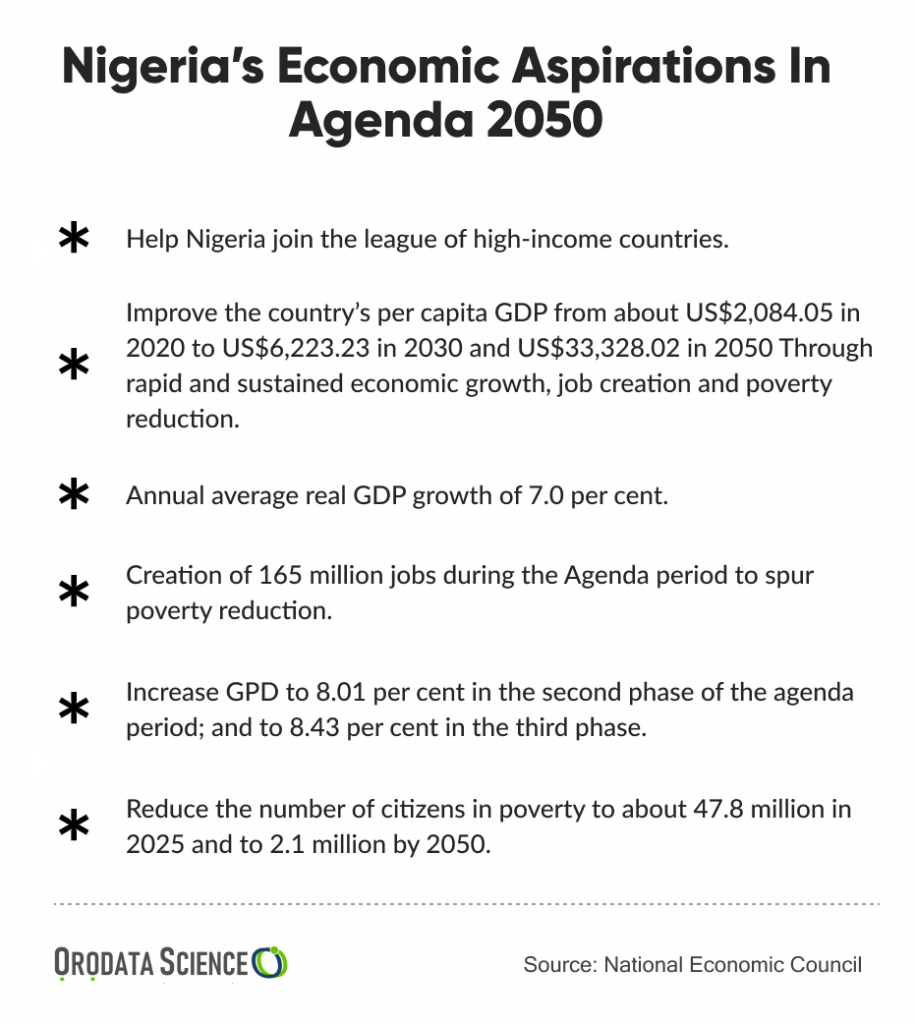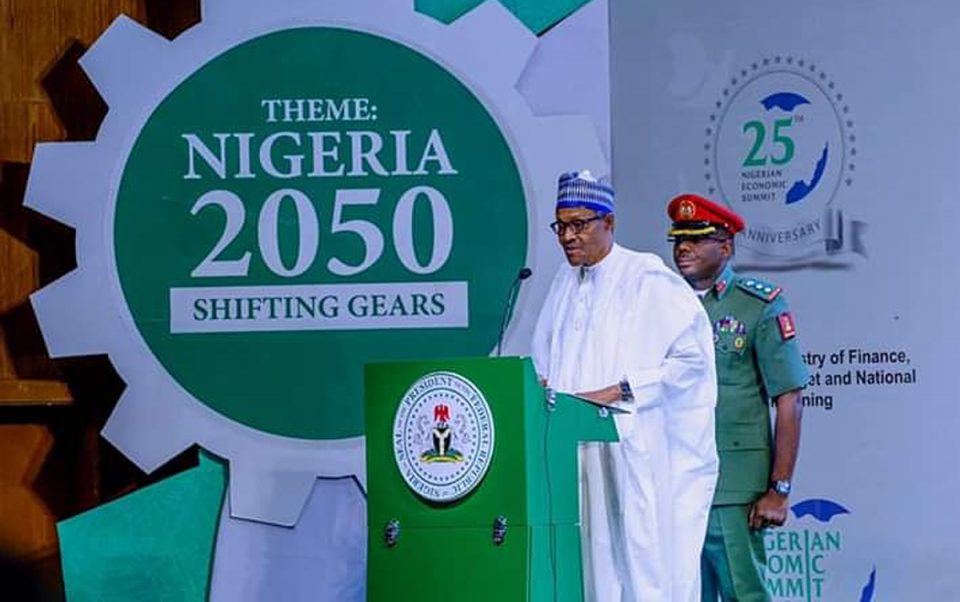President Muhammadu Buhari, on Wednesday, launched ‘Nigeria Agenda 2050’; an ambitious plan aimed at increasing the growth of Gross Domestic Product by seven per cent, creating 165 million new jobs, and reducing the number of Nigerians living in poverty from 83 million estimated in 2020 to 2.1 million in 2050.
According to the Nigerian Bureau of Statistics, an estimated 133 Nigerians are multi-dimensionally poor, while the inflation rate currently hovers around 21 to 22 per cent. Multidimensional poverty, using the Oxford Poverty and Human Development Initiative’s definition, encompasses deprivations experienced by poor people — such as poor health, lack of education, inadequate living standards, and living in environmentally hazardous areas.
However, the Nigeria Agenda 2050 hopes to rewrite these depressing figures, and take Nigeria “through to Upper Middle-Income Country and subsequently to the status of High-Income countries.”
The agenda which was launched by the President at the Federal Executive Council meeting in the Presidential villa, on Wednesday, had been approved by the National Economic Council (NEC).
Meanwhile, this is not the first time that the Nigerian political class would set long-term goals and visions for the country, but there are hardly any of these long-term goals that were actualised. This could be caused by a number of factors, which include a lack of political will to intentionally light up the vision; conflicting visions by successive governments, especially as such goals are set towards the end of an administration. Let’s start with Vision 2010. It was formulated under the military regime of General Sanni Abacha, and was adjudged one of the most promising policy documents conceived for Nigeria. It was put together by experts from various professional fields headed by former UAC Chairman, Chief Ernest Shonekan. However, administrations after Abacha, specifically Abdulsalam Abubakar’s and Olusegun Obasanjo’s supervised the death of the vision.
One of the goals of Vision 2020 conceived under the Obasanjo presidency was to make Nigeria one of the 20 best economies in the world. It was announced in 2006 by Obasanjo and launched in September 2009 by late President Umaru Yar’Adua’s administration. But like previous visions, that too sunk into the abyss of Nigeria’s failed dreams.
There is or was also the Economic Recovery and Growth Plan of 2017 to 2020, which was aimed at restoring economic growth, and investments in Nigerians after the historic economic recession of 2016. It is also safe to say that the ERGP whose objectives were to drive social inclusion, job creation, youth empowerment and improve human capital, has also failed. Inflation keeps rising and rather than improved empowerment and job creation, the Nigeria Bureau of Statistics announced an increase in the country’s unemployment rate from 23.1per cent in 2018 to 33.3per cent in 2020, and 37.7per cent in 2022. The rate is expected to exceed 40 per cent by the end of 2023.
This is not to prophecy doom, but it is doubtful that citizens are sanguine about the newly launched Agenda 2050. However, to exhale a trifle of hope, the new goals seem achievable if there is a will by the next administration to actualise them.


